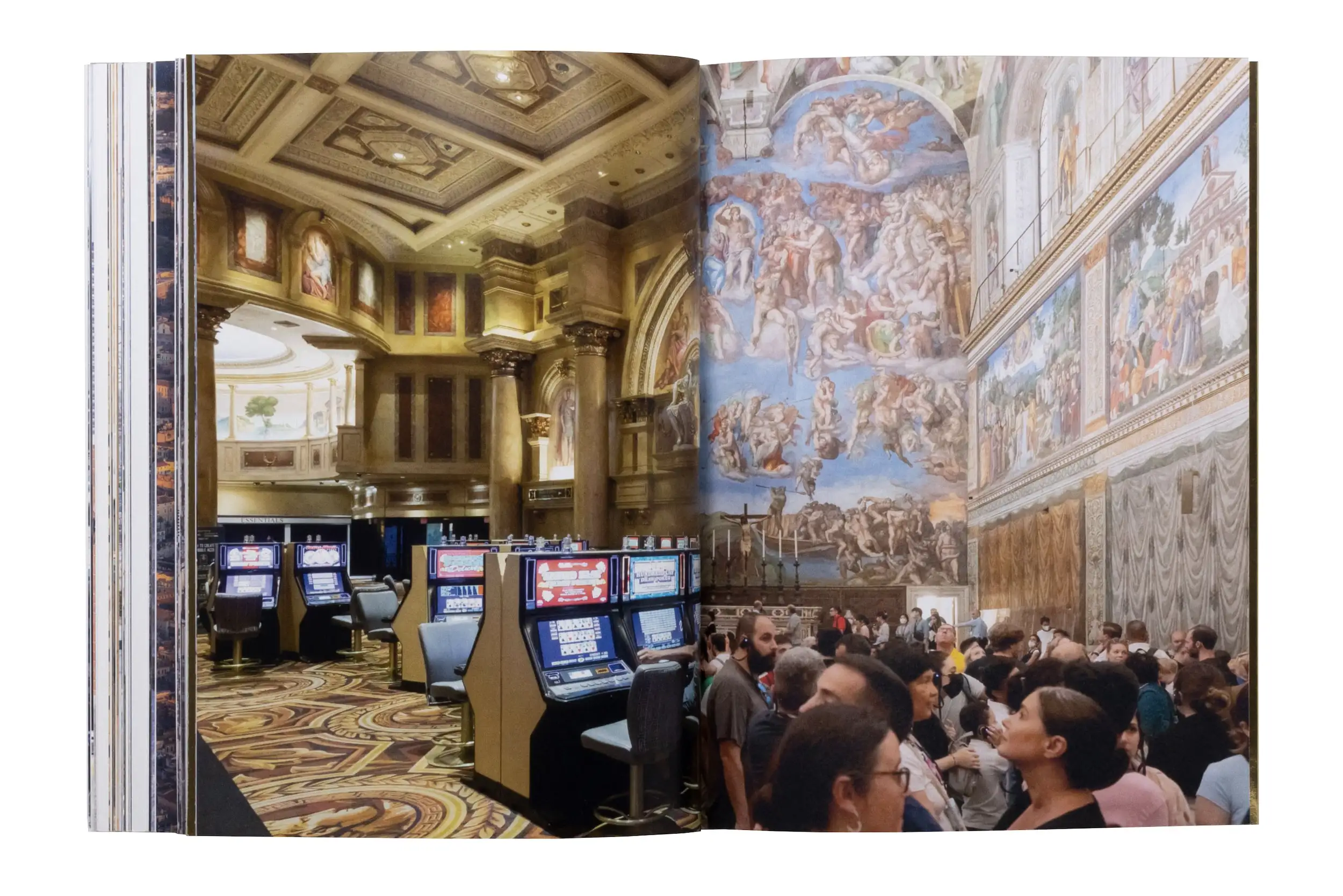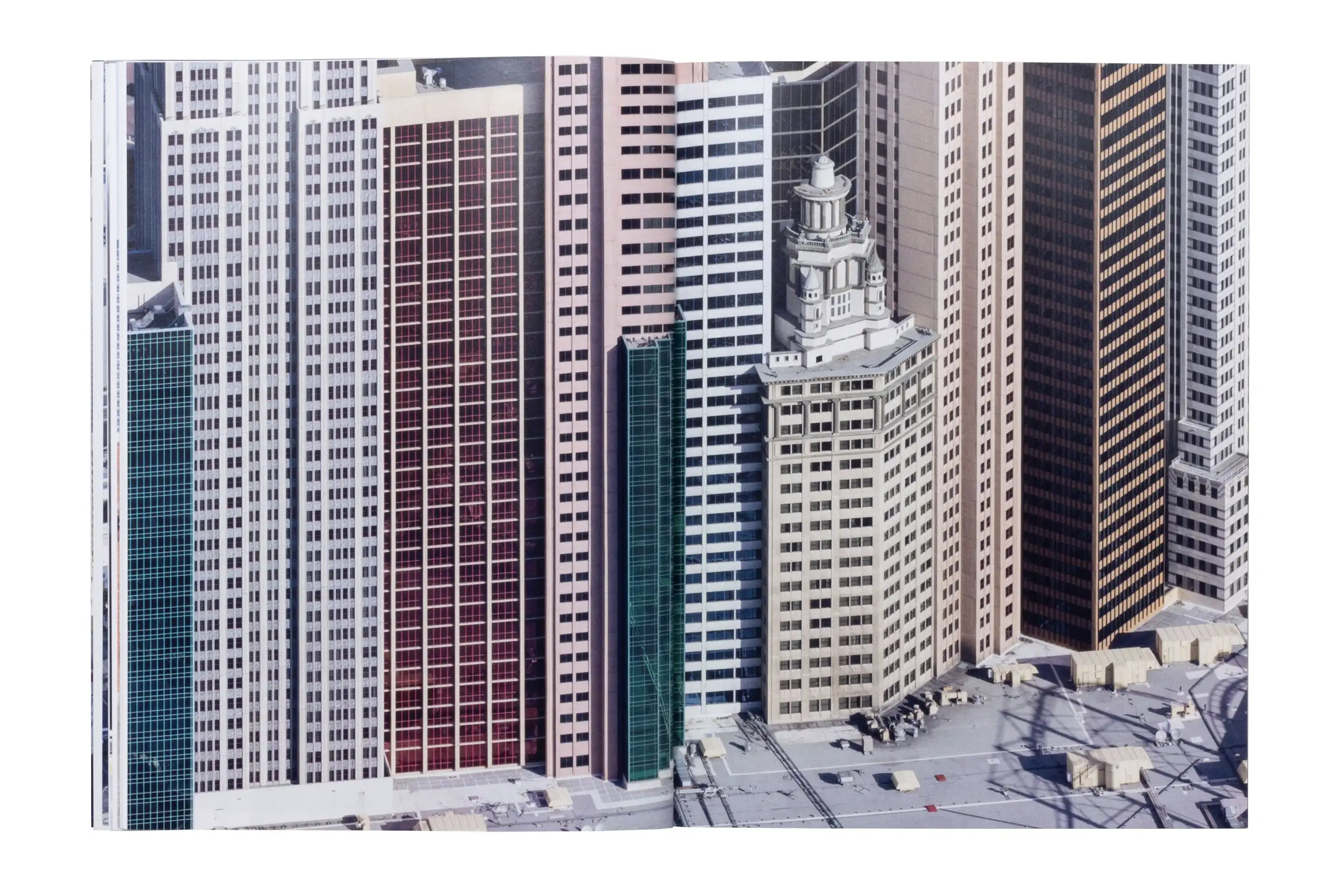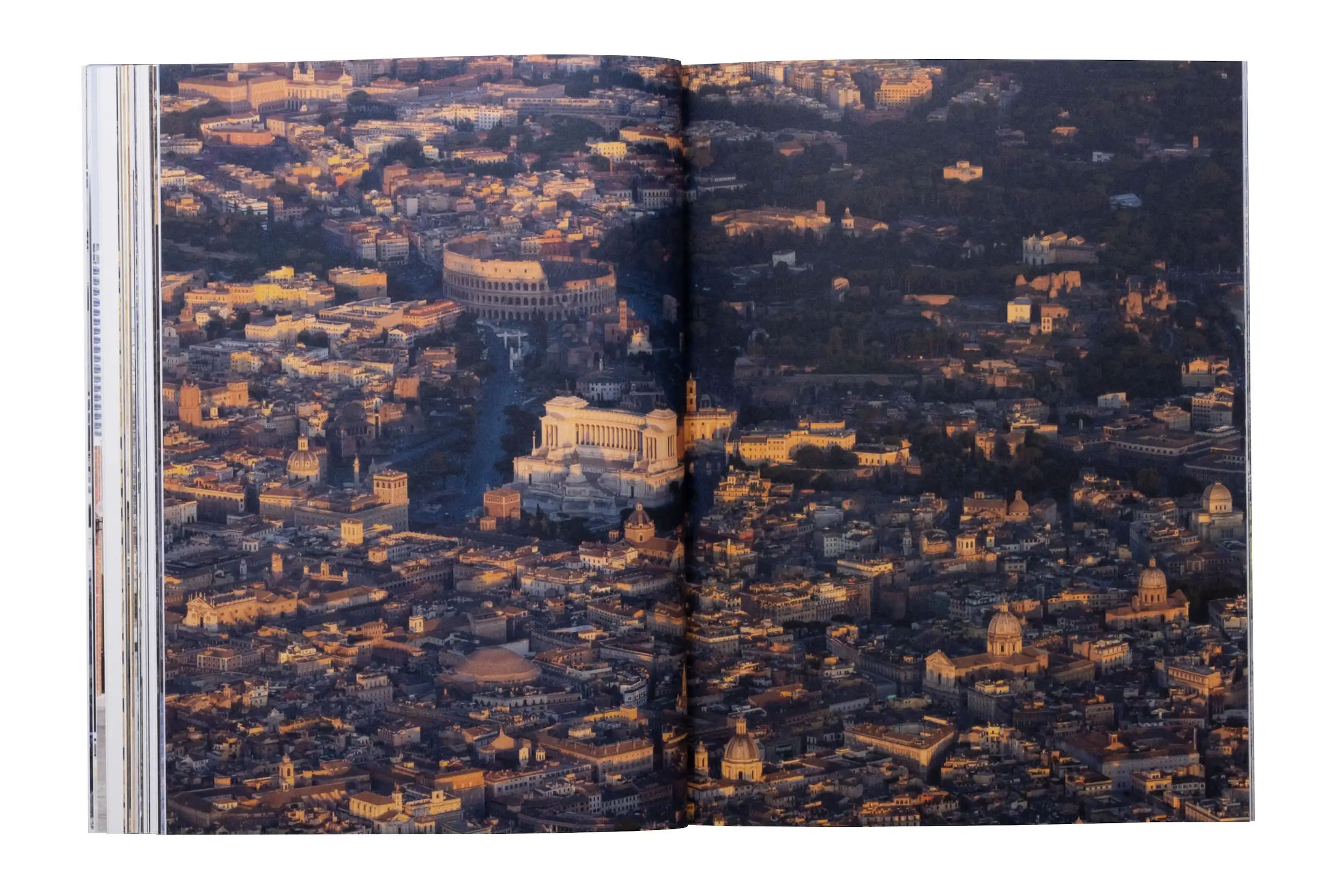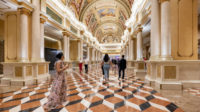
Rome–Las Vegas: Bread and Circuses, by Iwan Baan. Contributions by Lindsay Harris, Ryan Scavnicky, and Izzy Kornblatt. Lars Müller Publishers, 320 pages, $53.
Iwan and I arrived late morning on a sweltering July day. The planned topic of discussion for our visit was, naturally, Las Vegas, but first Denise took us on an abridged house tour. She noted the millwork—could it have been the design of someone affiliated with Charles Rennie Mackintosh?—and its eclectic mix of furnishings and decorations, from a metal-and-plastic McDonald’s sign to floral-pattern wallpaper designed by the late Bob Venturi, to furniture varied in style but consistent in comfort. Through her second-floor bedroom she brought us out to a terrace overlooking a gently sloping lawn. This, she told us, is where she dances to Klezmer music and where, when she hosted a reception in the midst of the pandemic, she came out to speak to the guests gathered below.
Downstairs, seated in the airy dining room after lunch, we turned to one of Iwan’s aerial photographs of Las Vegas. Denise famously organized the 1968 Yale studio that traveled to Las Vegas and conducted research for a book that would change the course of 20th-century architecture—Learning from Las Vegas (1972), co-authored with Bob Venturi and Steven Izenour. But the Las Vegas that Bob and Denise had so assiduously studied bears little resemblance to the Las Vegas of today. Its contemporary landscape of themed casino resorts and monumental attractions, realized on a scale that would have impressed even the likes of megalomaniacal French architect Étienne-Louis Boullée (1728–1799), seems somehow both paradigmatic of the contemporary city and not like a city at all.

Photo © Iwan Baan, courtesy Lars Müller Publishers
Looking at Iwan’s photographs, Denise suggested to us that Las Vegas has not changed all that much. She remarked that the city’s new megastructures are “signs visible from the air before ever you get there—they dominate everything.” Yet, she continued, “Does that mean that they are extraordinary or ordinary?” The commercial techniques of the earlier city have evolved in medium and scale: from the Strip’s midcentury neon signs—Learning from Las Vegas’s “iconography”—to its 1980s–1990s transformation into “scenography,” exemplified by themed resorts, such as the Excalibur castle and Luxor pyramid, culminating in its characterization today by the sublime purity of a building like the Sphere. Now that the city’s decorated sheds have fully given way to ducks, might it have outlived its usefulness as a case study in understanding (and learning from) ordinariness in the built environment?
Las Vegas’s economy has changed, too, Denise noted, recalling the relationship she developed with the casino magnate Steve Wynn, who helped fund her Perelman Quadrangle project at the University of Pennsylvania (2000). Like other developers of recent decades, Wynn understood that Las Vegas’s offerings needed to expand beyond gambling to encompass everything from entertainment to high-end dining to golf. But Wynn had gone even further, rejecting the campy ornament of earlier resorts, and predicting, Denise recalled, that neon signage would soon become irrelevant.
Denise had not found his prediction entirely convincing. Paraphrasing the late casino architect Alan Lapidus, she argued that people who come to Las Vegas feel “afraid that something wonderful might happen,” and that the sterile architecture of generic luxury was unlikely to capture the imagination. Neon itself may have gone to the “graveyard,” the Neon Museum’s repository of decommissioned signage located north of the Las Vegas Strip that Denise described as “like a cathedral,” but the exuberance and vulgarity that it has come to represent remains relevant. Denise, now ninety-two, has not visited Las Vegas in years. Still, the bold forms of the new casinos and the all-seeing eye of the Sphere would seem to confirm her view.

Photo © Iwan Baan, courtesy Lars Müller Publishers

Photo © Iwan Baan, courtesy Lars Müller Publishers
As we sat downstairs, we turned to Denise’s own photography. In a well-practiced presentation, Denise took us from South Africa through Philadelphia to Las Vegas, demonstrating the central role that photography has played in her efforts to perceive and understand the built world. The photos, almost all of ordinary subjects and places, are themselves extraordinary—and in their discovery of the sublime within the mundane, they seem, intriguingly, to prefigure Iwan’s own photographs of Rome and Las Vegas.
A few hours later, as we made our way back to the highway, it occurred to me that the similarity is no accident. The significance of Denise’s 1968 Las Vegas, as constructed and illuminated through her photographs and writings, is less in its status as the paradigm of ordinary sprawl—after all, that claim served as a justification for Bob and Denise’s own architectural methods—than in the empathetic, serious and nonjudgmental method of approaching a place that it introduced to the world of architecture, and it is this method that can be felt in the work of Iwan and many others working today.




